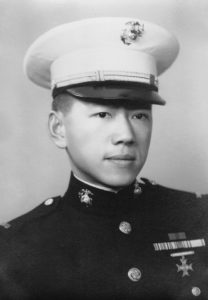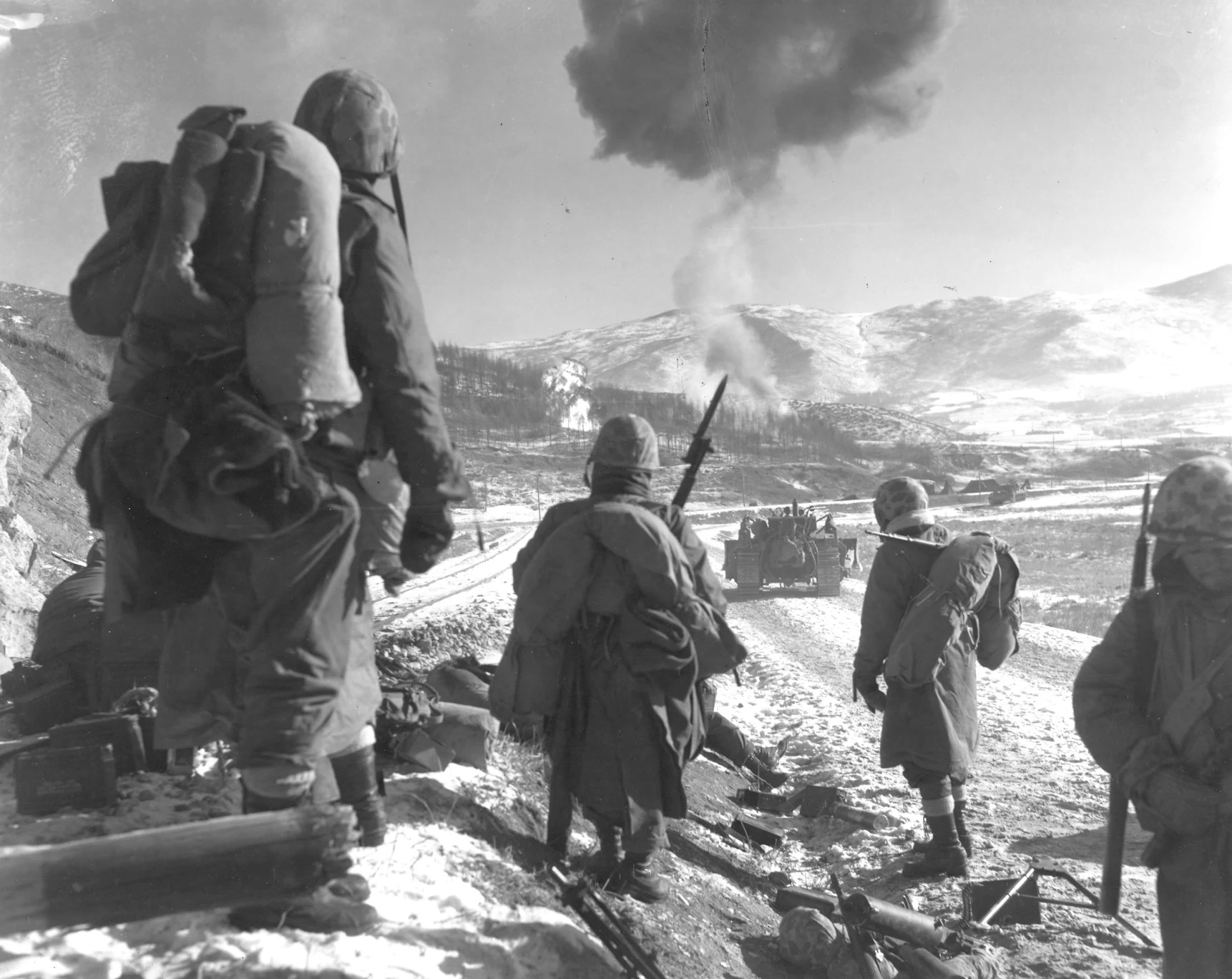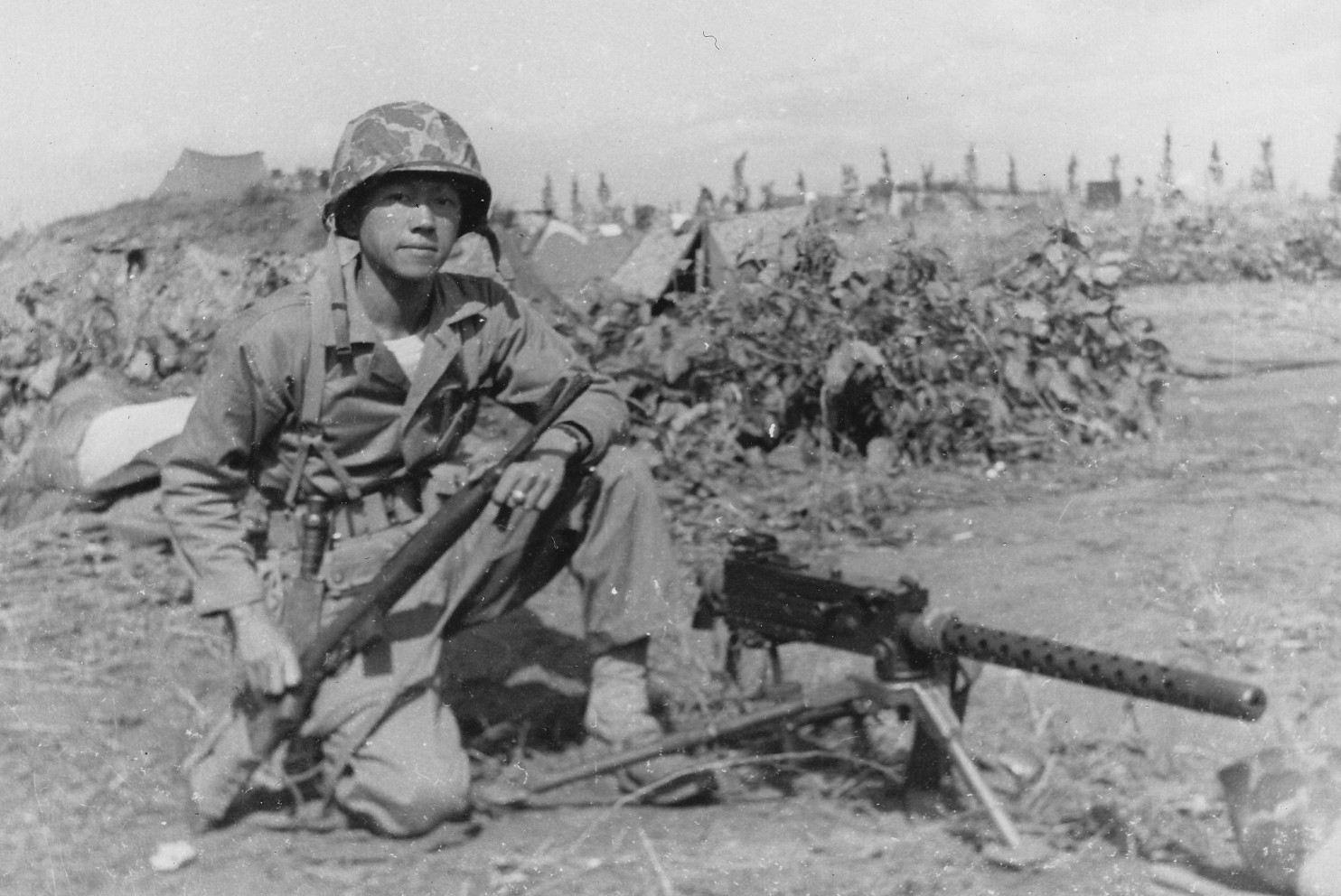In December 1950, First Lieutenant Kurt Chew-Een Lee led 500 Marines on a daring rescue mission as tens of thousands of Chinese troops streamed in from North Korea threatening to cut off an American unit during the vicious Battle of Chosin Reservoir. Traversing five miles across treacherous mountainous terrain, the Marines battled against a blizzard that cut their visibility to almost zero and against temperatures that oftentimes plummeted to 30 degrees below zero.
In spite of suffering from bullet wounds and a broken arm Lee, along with his unit, relentlessly engaged the enemy while under fire. Their exploits helped to preserve a crucial evacuation route for American troops fighting as United Nations forces — saving 8,000 men from certain death or imprisonment at the hands of the Chinese.
Born on January 21, 1926, in San Francisco, the slight of build Lee — all of 5 feet 6 inches tall and roughly 130 pounds — is believed to be the first Asian-American officer in Marine Corps history.
Despite his diminutive stature, Lee “brought outsized determination to the battlefield,” writes the New York Times.

Enlisting in the Marine Corps at the end of World War II, Lee told the Los Angeles Times in 2010 that he identified with this particular branch of the military for its reputation of being first into battle.
“I wanted to dispel the notion about the Chinese being meek, bland, and obsequious,” Lee added.
During World War II Lee was assigned as a language instructor in San Diego to teach Japanese. Swallowing his disappointment at not being sent to the Pacific, Lee chose to remain in the Marine Corps after the war, becoming a commissioned officer in 1946.
As the U.S. entered the Korean War in June of 1950, Lee was placed in charge of a machine-gun platoon that was advancing deep into North Korean territory.
Before the fighting began, many of Lee’s fellow Marines questioned whether he was capable of killing Chinese soldiers. Behind his back some used racial epithets, calling him a “Chinese laundry man.”
For Lee, the questioning of his devotion to his nation was ludicrous. “I would have … done whatever was necessary,” he told a Los Angeles Times reporter in 2010. “To me, it didn’t matter whether those were Chinese, Korean, Mongolian, whatever — they were the enemy.”
However, Lee’s Chinese ancestry soon came as a boon on the night of November 2, 1950. Conducting a solo reconnaissance mission amid heavy snowfall, Lee began to lob grenades and fire rounds at the enemy with the intent of flushing out the location of Chinese soldiers who were firing upon Lee’s men.
Still undetected, Lee crept up on the enemy outpost and utilized his working knowledge of Mandarin to confuse the Chinese.
The enemy soldiers hesitated for the briefest of moments as Lee called out in their native tongue, “Don’t shoot, I’m Chinese.”
That pause allowed for Lee’s unit to reposition and drive back the Chinese. For this, Lee was awarded the Navy Cross, the second-highest honor a Marine can receive.
“Despite serious wounds sustained as he pushed forward,” his citation reads, “First Lieutenant Lee charged directly into the face of the enemy fire and, by his dauntless fighting spirit and resourcefulness, served to inspire other members of his platoon to heroic efforts in pressing a determined counterattack and driving the hostile forces from the sector.”
Less than a month later, while Lee was still recovering in a field hospital from the gunshot wound to the arm that he had sustained during the early November fighting, the Chinese launched its Second Offensive, aimed at driving the United Nations out of North Korea. Tens of thousands of Chinese forces converged on the mountainous region near the Chosin Reservoir, overrunning the nearly 8,000 American troops stationed there.

Undeterred by his wounds, Lee “and a sergeant left the hospital against orders, commandeered an Army jeep and returned to the front,” to link up with the 1st Marine Battalion, writes the New York Times. Lee’s arm was still in a sling.
Using only a compass to traverse the snowy mountain terrain, Lee and his 500 Marines managed to find and reinforce the surrounded Americans, repeatedly driving back Chinese soldiers, according to the Times, to “ensur[e] that the vastly outnumbered Americans were able to retreat to the sea.”
The fighting was so fierce that day that roughly 90 percent of Lee’s rifle company was killed or wounded, but thanks to Lee’s indefatigable mentality, the evacuation route remained open.
“Certainly, I was never afraid,” Lee told The Washington Post in 2010. “Perhaps the Chinese are all fatalists. I never expected to survive the war. So I was adamant that my death be honorable, be spectacular.”
Lee survived the war, retiring from the Marines in 1968 after serving in Vietnam as an intelligence officer. For his service he was awarded the Navy Cross, the Silver Star, and two Purple Hearts.
The men he commanded never forgot Lee. “I didn’t care what color he was,” Ronald Burbridge, a rifleman in his unit in Korea, said in an interview for a 2010 Smithsonian documentary, “Uncommon Courage: Breakout at Chosin.”
“I have told him many times, thank God that we had him.”





